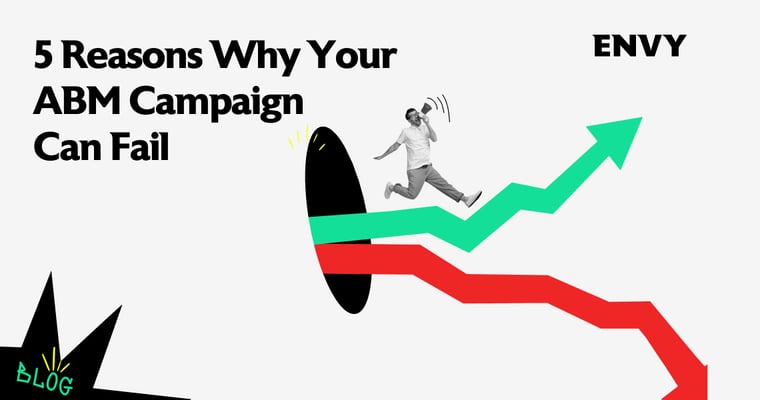
2. Lack of Account-Specific Content
Personalization is at the heart of ABM. Each target account MUST receive content that speaks directly to their specific challenges – and the messaging will be different depending on which stage in the buying process they're currently on. Failure to create account-specific or stage-specific content will result in low engagement and low conversion rates.
How to avoid it? Develop a content strategy in advance as part of your strategy that addresses the unique pain points and interests of each target account, and takes into consideration all stages. One thing we like to do is asking sales (or if you can, prospects and customers directly) for the most frequent questions they get asked before making the decision. Use these to create tailored content that resonates with decision-makers at different stages of the buying cycle.
3. Mismanagement of Internal Processes and Budget
All campaigns need coordination of internal processes, but ABM can be especially picky. Since the campaign’s set to targeting specific accounts with specific messaging, timing is of the essence and any delays will stall the campaign momentum.
Common issues include prioritizing paid media campaigns without securing the necessary budget, preparing content to promote or more generally, failing to synchronize campaign readiness across different channels.
How to avoid it? Detailed planning of every step will help you ensure all aspects of your ABM campaign are synchronized. Don't forget to coordinate efforts across departments to keep your campaign on track. For example, First interaction, Persona A = ebook download, 2nd interaction = email 1 triggered, 3rd interaction = retargeting on LinkedIn and 6Sense etc. Decide at which stage the SDRs reach out and engage etc
4. Imbalance Between Content Production and Distribution
Producing high-quality, targeted content is definitely your aim for any sort of campaign, but it's easy to forget that's only half the battle. Equally important is the distribution of that content to the right audience through the right channels, otherwise the reach will be limited, and we all know that means lower results. Think 50-50 or even 40-60 in favor of content distribution to make sure the great content you write actually has chances to reach the right audience.
How to avoid it? That's pretty straightforward, all you have to keep in mind is balancing your budget and efforts between content production and distribution. Identify the most effective channels for reaching your target accounts and invest in tactics that increase content visibility and engagement, such as targeted advertising, social media, and email marketing.
And remember, it’s a crime against marketing: so many companies create great content and don’t distribute it enough or repurpose it. The hours/days/weeks of work literally wasted.
5. Budget spread throughout the campaign
Different stages of your ABM campaign mean different goals. Tricky, we know. But hear us out.
During the first phase, you want to engage as many of your target accounts as possible, and then nurture them as you go. The more target accounts you engage with, the more accounts you can nurture and the higher chances for opportunities. Why would you allocate your budget evenly throughout these stages then? Not to mention the initial stages of in-depth account research and account penetration.
Frontloading your campaign budget is crucial for higher impact and without it, your campaign may struggle to gain the momentum necessary for engaging key accounts effectively, leading to underwhelming results and inefficiencies in resource allocation throughout the campaign's lifecycle.
How to avoid it? Again, the answer's clear. Frontload your budget and increase your chances for achieving a higher ROI at the same time. Enabling more effective targeting and engagement from the outset will set you on the right track.
Thoughts?
We've been loving building ABM strategies and we know you'll too–but it doesn't mean they're without challenges. Remember about them when planning and executing your campaign, and assuming you're the B2B marketing part of the ABM mix, share this piece with the sales and C-level part of your team. It's always easier when everyone's on the same page.
And if you feel you'll need help squeezing the most out of your campaign, we're an ABM agency clients have been turning to for the past 10 years. Do you wanna give it a go too?






.jpg?width=352&name=Blog%20cover%20-%20cybersec%20abm%20(1).jpg)